Below is a transcript of my interview with Donna Murch for the second episode of the Making the Left Coast Podcast. We spoke in early June 2019 via Skype. Although the text below has some errors, it is mostly faithful to the audio.
Chuck Morse: You’re listening to the Making the Left Coast Podcast, episode number two.
Hey there. My name is Chuck Morse, the host of The Making the Left Coast Podcast. The purpose of this podcast is to explore the history and challenges of the Bay Area left, which I do by interviewing authors and activists who can help us make sense of its lessons.
When I began as podcast, I knew that I would devote at least one episode to the Black Panther Party, which was founded in Oakland in 1966 and had a huge impact globally as well as locally. Globally they became a or perhaps THE symbol of black radicalism in the 1960s. With their confrontational approach and revolutionary ideology, they gave voice to the rage at the damage done by white supremacy and affirmed the need to build a world in which African Americans occupy the dignified position to which they are due. They inspired people across the planet while striking fear in the heart of the American establishment. This is why J Edgar Hoover, who led the FBI at the time, described them as the greatest threat to the internal security of the United States and tried to destroy the party with a massive, mostly illegal campaign of government repression.
And they had a tremendous local impact. Prior to their rise, Oakland was sort of a sleepy, racist backwater. A place that Gertrude Stein famously said had “no there there.” It was dominated by a cabal of white Republicans who did their best to defend the prevailing white supremacist system that exploited and brutalized the city’s large Black population. The Panthers challenged this with a multifaceted, intensely creative array of programs and activism. They not only helped to dislodge the old Republican power structure but also changed the way that we experience the city. Instead of being a place that is outside of history, without any “there there,” they globalized it and made it into a site in which we experience and work out issues of global importance.
Not surprisingly, their vast impact has generated an equally vast body of literature about them. You could probably fill several bookcases with the memoirs, historical studies, and other works that explore their legacy. This is despite the fact that their really intense period of activity only lasted about seven or eight years and they probably never had more than 5,000 members at a single time. Although scholars of the Panthers often disagree about how to interpret them, everyone agrees that their story is fascinating and merits exploration.
And there are still important questions to unpack, particularly with respect to the Panthers’ relationship to Oakland. This is where I’m hoping that this episode of the podcast can be of some help. For one, a lot of the work on the Panthers tends to focus on their dramatic militancy while overlooking their sophisticated political ideas. This is understandable, because their story is very dramatic, but we also need to figure out their core politics—what they really believed—so that we can understand why they did what they did and also to situate them in the broad arc of political history. And this is not easy because their political commitments were complicated and perhaps even contradictory in some respects.
And how we interpret them impacts how we understand Oakland. For example, if we say that they were a bunch of hotheaded-but-misguided young radicals who inadvertently pushed the city toward the liberal democratic order that we have today, then this might sanction a view of Oakland’s history as a slow but inexorable march toward the present, toward what we have now. Or, alternately, if we say that the Panthers were visionaries who tried to turn Oakland into a communist utopia, then we end up telling a different and much more complicated story about the city’s past. The Panthers past and Oakland’s past are inextricably connected.
So, I think that these questions merit exploration. Although smart people can draw different inclusions about them, there can be no doubt that Donna Murch, who is my guest on this episode of the podcast, is one of the best people on the planet to help us explore them. She is a professor of history at Rutgers University, a deeply sophisticated and radical scholar, and happens to have written the book on the Panthers in Oakland. Her award-winning work, Living for the City: Migration, Education and the Rise of the Black Panther Party in Oakland, California, tells the amazing story of the Panthers’ experience in the city while placing them in the larger context of post-war, African-American history. It’s a fabulous book.
In the discussion that follows, Donna and I jump right into some of the big questions that come up when you think about the Panthers and their politics. We talk about their relationship to the state and other scales of political authority, their efforts to take over the Oakland city government in 1973, the role of democracy within the party, among other interesting issues. It was a great pleasure for me to discuss these things with her and I hope you enjoy listening to the interview as much as I enjoy conducting it.
And if you do enjoy this please don’t forget to add your email to the email list at makingtheleftcoast.com and to like the podcast’s Facebook page.
Thanks and enjoy!
Chuck Morse: Hi Donna. Thank you so much for being a guest on the podcast. I really appreciate it. It’s great to talk with you and have you on the show.
Donna Murch: Oh, it’s absolutely my pleasure. Thank you, Chuck.
Chuck Morse: I’m hoping that we can spend some time discussing what prompted you to work on the Panthers and what it was like to do the research that led to your book. But, before we do that, I’d like to begin by talking about the Panthers and what they did in Oakland. This is a fascinating, inspiring story, which your book covers, and this is one of the reasons why your book is so great. Does that sound like a good plan to you?
Donna Murch: Sure, it sounds great. Continue reading

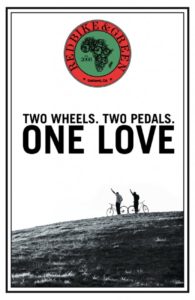
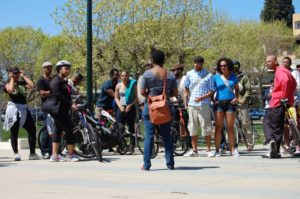
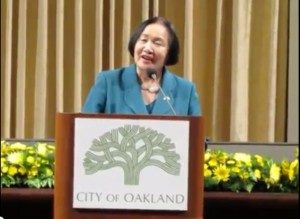
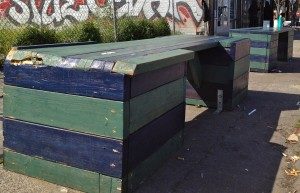
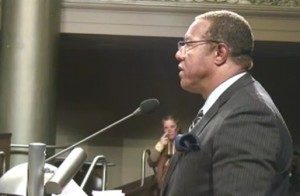



 Oakland’s recent history is rich in contradictions. When voters elected Lionel Wilson—the city’s first Black and Democratic mayor—in 1977, they took a decisive step in the ouster of the white, Republican, pro-business regime that had run Oakland as an exemplar of American municipal apartheid for decades. Wilson’s ascendency was part of a vast transformation in the composition of local political elites, who now largely reflect the political and racial background of the population that they govern. Indeed, since then, most of Oakland’s mayors have been “minorities,” all have been Democrats, and several have had roots in social movements. Similar claims can be made about those who have occupied the posts of City Manager, Chief of Police, Economic Development Director, and Port Director, to cite only the most significant positions. In many respects, there was a revolution in city affairs, one that we can analogize, with some justice, to the 1994 defeat of apartheid in South Africa.
Oakland’s recent history is rich in contradictions. When voters elected Lionel Wilson—the city’s first Black and Democratic mayor—in 1977, they took a decisive step in the ouster of the white, Republican, pro-business regime that had run Oakland as an exemplar of American municipal apartheid for decades. Wilson’s ascendency was part of a vast transformation in the composition of local political elites, who now largely reflect the political and racial background of the population that they govern. Indeed, since then, most of Oakland’s mayors have been “minorities,” all have been Democrats, and several have had roots in social movements. Similar claims can be made about those who have occupied the posts of City Manager, Chief of Police, Economic Development Director, and Port Director, to cite only the most significant positions. In many respects, there was a revolution in city affairs, one that we can analogize, with some justice, to the 1994 defeat of apartheid in South Africa.